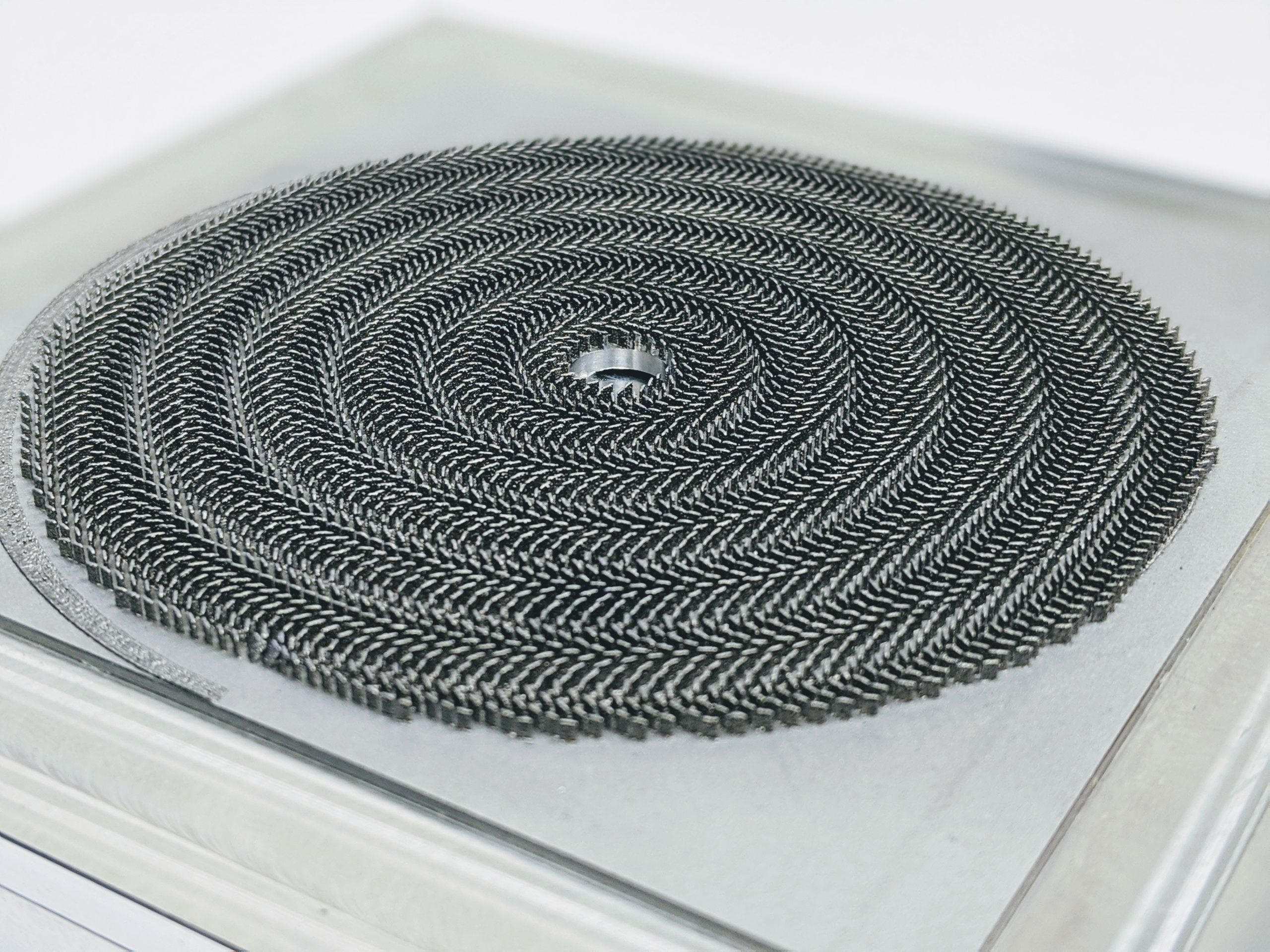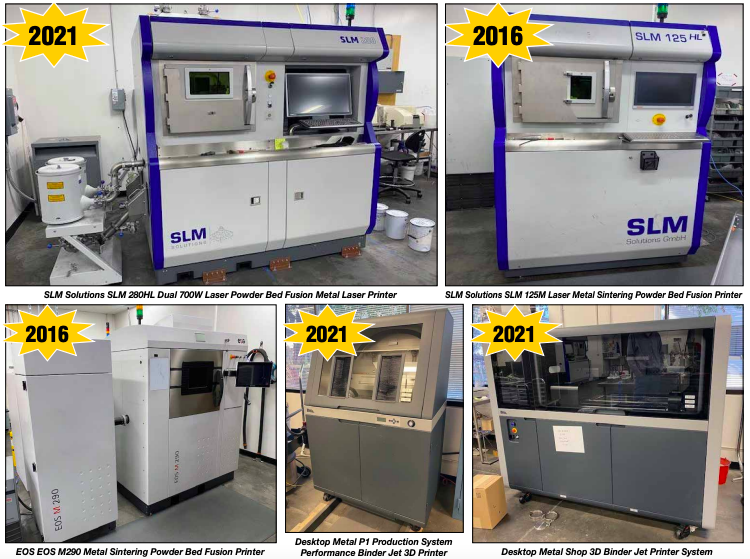NASA’s Jet Propulsion Laboratory (JPL), known for some of the most exciting work in the space sector, announced that it was laying off eight percent of its workforce, 530 of its workers along with 40 contractors. The staff reduction is representative of the current financial environment, with entities across tech letting go employees in even greater numbers than the U.S. space agency.
Colleagues and bystanders alike mourned the situation facing these federal employees, who now have to find new work during such a difficult macroeconomic climate. At the same time, however, private space companies are attempting to come to their rescue, posting job opportunities for JPL staff online. What does the situation mean for new space, a sector that additive manufacturing (AM) has been actively disrupting since near this industry’s inception?
Boosting New Space
The internet transitioned into a commercial network for public use in the early 1990s, following the removal of restrictions on its commercial use by the National Science Foundation in 1991. This paved the way for what is now the nearly $400 billion internet service provider market and the ubiquity of the web in our everyday lives.
Though not nearly the same in terms of scale or execution, parallels can be drawn to the privatization of the space industry. As firms embark on building new space stations and SpaceX expands its reach in the sector, the layoffs at JPL can be thought of as the potential privatization of talent, expertise, and tribal knowledge—depending on where the lab’s former employees go.
Douglas Hofmann, Senior Research Scientist and Principal at JPL, said in a LinkedIn post, “NASA JPL is a relatively small workforce compared to the outsized impact it has on space exploration. Most JPL employees are specialists in what they do and there is very little redundancy in their job functions. This means that people with very unique and highly specialized skills are now on the market. This will make it a real challenge to connect each person with the most appropriate new career so please be patient with the process.”
Hofmann seems to be essentially calling for the private space industry to take on these employees, which would bring a wealth of knowledge to whoever takes them on. In particular, the scientist suggested that many of the staff members would want to remain local, saying, “Additionally, many of the affected employees are mid and late-career and have been at JPL for more than 5-10 years. This means many of them have houses and kids in the local school districts and cannot easily move on a short timeframe. Many of the employees will be looking for jobs in the Southern California area.”

“In collaboration with NASA’s Jet Propulsion Laboratory and the Univ Rennes, CNRS, IETR – UMR 6164, 3D Systems produced several thousand elements of this Metasurface (MTS) antenna on a single baseplate. Low profile and low mass make this an ideal Ka band antenna type for SmallSats and CubeSats.” (Reference: D. González‐Ovejero, O. Yurduseven, G. Chattopadhyay and N. Chahat, “Metasurface Antennas: Flat Antennas for Small Satellites,” in CubeSat Antenna Design, IEEE, 2021, pp.255-313.)
Based on the job openings in the new space market, there’s a high probability that they will head to a number of different companies in the sector. Procure.FYI notes that “the industry currently boasts around 6,000 job openings waiting for the right candidates in companies like SpaceX, Relativity Space, Blue Origin, Axiom Space, [and] York Space Systems LLC.”
Of course, Relativity Space has AM at the heart of its operations and it is well known that SpaceX and Blue Origin rely heavily on 3D printing. However, it should be obvious to 3D printing professionals by now that nearly every private space company uses AM at some level, if not in very crucial areas of their businesses. That is why, in its “3D Printing in Commercial Space: The AM Ecosystem in the Private Space Industry” report, Additive Manufacturing Research (AMR) anticipated a $5.4 billion revenue opportunity for 3D printed parts alone by 2031 in the private space sector.
Foreign Employment
Given the sensitivity of the projects that employees at JPL were involved in, it seems most likely that they will end up at any number of space companies. However, as Hoffman also explained in his post, there may be foreign opportunities for some of these workers.
“JPL is NASA’s federal research and development center, and as such, is one of the few places in the U.S. aerospace industry that employs green card holders, foreign nationals, and U.S. citizens born in designated countries. Many of the job offers pouring in right now are for U.S. citizens only and many also require security clearance. Please recognize the unique situation that many JPL employees are in with their eligibility for new careers.”

NASA SpaceX Crew-6 mission, Expedition 69 at the 2023 Dubai Future Forum. Image courtesy of Mohammed Bin Rashid Space Centre.
This element may be important to the development of the space sector globally, as these employees could carry with them vital expertise to programs abroad. Right now, the European Space Agency, as well as the nascent space sectors in China and India, are ramping up growth. 55 JPL workers introduced to entities in these regions may not be completely game-changing to their own space economies, but they could bring vital knowledge that can address issues that have a butterfly effect on individual companies and programs.
Other Space Assets
Outside of the human element, there are other assets being shaken up in the space sector and beyond. As the economy began to slow to a near halt, many companies have found themselves under significant financial pressure. This is most obvious when looking at the publicly traded firms, with many of the SPAC AM businesses now trading far below $1 and a fraction of their initial valuations. However, we are also witnessing private companies not only slim down but cease operations entirely. Uniformity Labs and Arevo are two notable examples.
Along with the closure of businesses come the sale of physical assets, in some cases millions of dollars in equipment. In addition to the small 3D printing operations just cited, major aerospace and space companies are shutting facilities and auctioning off machines. In one instance, one of the world’s largest defense conglomerates was selling multiple laser powder bed fusion (LPBF) systems, with accompanying equipment, all of which would have cost several million dollars when first bought.

Assets from Uniformity Labs’ auction.
In the case of these large firms, they’re obviously not going out of business, but reallocating resources. However, for savvy, smaller firms or perhaps those in nations where an older LPBF setup provides an advantage against local competitors, these assets could prove extremely valuable and, right now, they’re available at the lowest prices possible in the near term.
There’s also the likelihood that moneyed interests can facilitate the purchase of this equipment for sale at a future point when it is worth more. This may also be true not only for machines, but entire businesses in the startup space.
Bigger Picture
Altogether, the layoffs at JPL are a microcosm of what is taking place in industry as a whole. As 3DPrint.com Macro Analyst Matt Kremenetsky has pointed out, during this economic downturn, it’s actually easier to see where the market overall is headed. Because finances are constrained, we can observe the areas where resources are being allocated. That will provide a glimpse into what is valuable enough to invest in, even now.
Subscribe to Our Email Newsletter
Stay up-to-date on all the latest news from the 3D printing industry and receive information and offers from third party vendors.
You May Also Like
Further Understanding of 3D Printing Design at ADDITIV Design World
ADDITIV is back once again! This time, the virtual platform for additive manufacturing will be holding the first-ever edition of ADDITIV Design World on May 23rd from 9:00 AM –...
3D Printer Maker EVO-tech Reborn as NEVO3D — Once More With Feeling
EVO-tech was a 3D printing service and original equipment manufacturer established in 2013 and based in Schörfling am Attersee, Austria. The company produced high-quality material extrusion systems featuring linear bearings,...
3D Systems Brings 3D Printed PEEK Cranial Implant to the U.S. with FDA Clearance
For more than 10 years, 3D Systems (NYSE:DDD) has worked hand-in-hand with surgeons to plan over 150,000 patient-specific cases, and develop more than two million instruments and implants from its...
CDFAM Returns to Berlin for Second Annual Symposium
The second CDFAM Computational Design Symposium is scheduled for May 7-8, 2024, in Berlin, and will convene leading experts in computational design across all scales. Building upon the first event...































